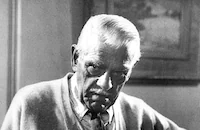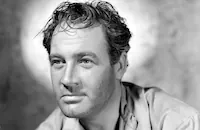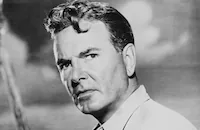Tower of London

Brief Synopsis
Cast & Crew
Rowland V. Lee
Basil Rathbone
Boris Karloff
Barbara O'neil
Ian Hunter
Vincent Price
Photos & Videos
Film Details
Technical Specs

Synopsis
Richard, Duke of Gloucester, the King's brother and successor to the British throne, is determined to take a short cut to the crown. First, he arranges for John Wyatt, who is in love with Lady Alice Barton and is a cousin of Queen Elizabeth, to be exiled to France. Next, he has the weakling King Henry VI slain by Mord, the court executioner. With the aid of Mord, he also puts to death the Duke of Clarence, who stands in his way to the throne. Unaware of his brother's treachery, King Edward IV, on his deathbed, names Richard as protector for the boy king Edward and his brother. To prevent Richard's mad ascension to the throne, Wyatt returns to England and steals the royal treasure, but before he can bestow it upon Richard's rival, Henry Tudor, Wyatt is caught and imprisoned. With the help of the Queen and Alice, John escapes with the treasure to France and Henry Tudor. In revenge, Richard has Mord murder the young ruler and his brother. Richard's reign of terror is ended, however, when Henry Tudor returns triumphantly to France with his troops and slays both the maniacal Richard and Mord, his minister of death.

Director
Rowland V. Lee
Cast

Basil Rathbone

Boris Karloff

Barbara O'neil

Ian Hunter

Vincent Price
Nan Grey

Ernest Cossart

John Sutton

Leo G. Carroll

Miles Mander
Lionel Belmore

Rose Hobart

Ronald Sinclair
John Herbert-bond

Ralph Forbes
Frances Robinson
G. P. Huntley Jr.
John Rodion
Walter Tetley
Donnie Dunagan
Crew
Major G. O. T. Bagley
Sir Gerald Grove Bart
Bernard B. Brown
Fred Cavens
Edward Curtiss
Fred Frank
R. A. Gausman
William Hedgcock
Robert N. Lee
Rowland V. Lee
Rowland V. Lee
Jack Otterson
Charles Previn
Richard H. Riedel
George Robinson
Henry Shuster
Frank Skinner
Vera West

Photo Collections
Film Details
Technical Specs

Articles
Tower of London (1939)
Basil Rathbone stars as the conniving Richard, Duke of Gloucester, who is sixth in line to sit in the throne of 15th-century England. Rather than wait his turn, he engineers a series of murders so that his ascent will come about more quickly. He arranges for the senile Plantagenet King Henry VI (Miles Mander) to be killed in battle. He drowns the smarmy Duke of Clarence in a vat of wine. He even orders the murder of two children (John Herbert-Bond and Ronald Sinclair). Anyone familiar with Shakespeare's Richard III -- or with the formulas of Hollywood melodrama -- could predict the fate of someone who so cruelly lives by the sword. But the beauty of a film as diabolical as Tower of London is not knowing who is going to die next, but savoring each victim's unorthodox journey from the castle to the grave.
Though Shakespearean in tone, the film was not derived from the Bard's tragedy (circa 1592). The screenplay was written by Lee's brother Robert N. Lee who, according to Time Magazine, claimed "they boned through 350 volumes of British history" to formulate their original dramatization of the struggle for the English crown.
The film's tone of classic horror is due primarily to the presence of Boris Karloff as Mord, the in-house executioner and torturer. Pushing the role from merely menacing to truly monstrous, he appears with a bald head (courtesy of legendary makeup man Jack Pierce), dragging a club foot (which he uses to stomp on a child's back in one scene), a raven perched on his shoulder, and a huge axe in his hands. Lee had directed Karloff in Son of Frankenstein earlier the same year, and director and stars were clearly running in the same groove. In one gruesome flourish that gives the film its Grand Guignol flavor, Mord saunters through his torture dungeon, keeping tabs on the various victims, "with the air of a celebrated maitre d'hotel," quipped The New York Times. He pauses next to a man being slowly crushed by a weighted board. After a moment's contemplation, Mord reaches down and fastidiously adds another weight to the burden.
Watching Vincent Price in Tower of London, one couldn't predict he would become one of horrordom's most beloved stars. A classically-trained actor who studied at Yale and the University of London, Price's typical role tended toward the smarmy rake, which he plays brilliantly in this film. He had made his first screen appearance the year before, in Lee's comedy Service de Luxe (1938). Twenty-three years after appearing in Tower of London Price graduated from victim to perpetrator, when he played the role of Richard in the 1962 remake, directed by Roger Corman.
Price's most memorable sequence comes when his character is drowned in a vat of Malmsey wine. Years later, Price recounted the filming of the scene in two slightly different forms. In the more whimsical account, Price said, "They fixed a handrail at the bottom of the barrel so that I could dive down and hang on to it. The liquid was water [mixed with Coca-Cola], but Basil and Boris had used the barrel to deposit cigarette butts and old bottles. I had to hold on to the rail for a full ten counts, which seemed endless, and then a couple of hefty lads opened this damp tomb and yanked me out by the heels. I got a round of applause from the crew, but I was disappointed to find my two co-stars, who had been very nice to me so far, not on the set. I thought the least they could do was lead the applause. But they appeared a few moments later with a beautifully wrapped gift -- a carton of Cokes."
At other times, the incident has a more ominous tone, as repeated in Michael B. Druxman's Basil Rathbone: His Life and His Films, when Price said, "Being young and foolish, I insisted on going into the vat myself...while I was down at the bottom of that tank...I heard the crew breaking into the vat with axes. It seems that my friends, Boris and Basil, had sat on top of the lid and the thing was stuck. Luckily for me, they got it open before I was in any serious danger."
Apparently there was room in the Tower for only one monster, so Rathbone plays Richard not as a hunchbacked demon but as a quiet charmer, stabbing his victims in their backs while smiling in their faces. "Basil gave an excellent performance," said Price, "and, in light of the modern research on the subject, was probably more correct in his interpretation of Richard than either [Laurence] Olivier or myself."
Beneath his icy British accent and murderous eyes, Rathbone was a good sport on the set. "The crew on that picture loved Basil," Price recalled, "There was one grip, who would always be making good-natured insults about England. Basil would feign anger and chase the man up into the catwalks."
Rathbone's son, John Rodion, appears briefly in Tower of London, as the first person to fall by Mord's axe, in the opening reel.
Production began on August 11, 1939. Lee was afforded a relatively generous $500,000 budget and a 36-day shooting schedule. The recreation of the famed tower was designed by Jack Otterson, in collaboration with art director Richard Riedel. Because a full-size replica could not be built, the scale of the 90-foot tower was lessened to 75 feet, and portions of the stonework were provided by matte paintings (by Jack Cosgrove and Russell Lawson).
The battle scenes were filmed in Tarzana, California, during an August heat wave. When rain machines were used to enhance the spectacle of the brawling armies at the Battle of Tewkesbury, it wreaked havoc with the cardboard and papier-mâché suits of armor worn by the 300 extras hired to wage war on one another. The costumes fell apart and filming had to be halted.
When studio executives screened a cut of Tower of London in November, 1939, they objected to the quaint, historically accurate musical score composed by Frank Skinner (assisted by Hans Salter, supervised by Charles Previn). It had been performed on instruments appropriate to the period. Universal's producers wanted a more thunderous sound, so a new score was quickly adapted from Son of Frankenstein, which also explains why Tower of London has such a horror movie feel.
While there is something for everyone to enjoy in Tower of London, some critics were bothered by the shocking clash of costume drama and fright film. The New York Post opined that, "Somehow the picture manages to be neither history nor horror, each apparently having a bad effect on the other." The New York Times, however, insisted that the morbid fun excused any dramatic shortcomings, "Although it is less than stunning as pageantry, less than thrilling as drama and less than satisfactory as entertainment, it is more than rich in murder and all the sinister appurtenances thereof. Death lingers longer at the Rialto. Brrr!"
Producer: Rowland V. Lee
Director: Rowland V. Lee
Screenplay: Robert N. Lee
Cinematography: George Robinson
Film Editing: Edward Curtiss
Art Direction: Jack Otterson
Music: Ralph Freed, Hans J. Salter, Frank Skinner
Cast: Basil Rathbone (Richard, Duke of Gloucester), Boris Karloff (Mord), Barbara O'Neil (Queen Elizabeth), Ian Hunter (King Edward IV), Vincent Price (Duke of Clarence), Nan Grey (Lady Alice Barton).
BW-92m.
by Bret Wood

Tower of London (1939)
Quotes
Trivia
Notes
According to a news item in Hollywood Reporter, Universal borrowed Ian Hunter from M-G-M to appear in this picture. Another item in Hollywood Reporter adds that Universal was planning to borrow Alan Hale from Warners, but Hale's participation in the final film for a "topline" is doubtful. Modern sources add the following actors to the cast: Ernie Adams, Harry Cording, C. Montague Shaw, Ed Brady, Ivan Simpson, Stanley Blystone, Nigel de Brulier, Holmes Herbert, Dick Alexander and Jack Smith. Other films based on the life of Richard III are the 1912 Sterling Film Co. production Richard III, directed by James Keene and starring Frederick Warde (see AFI Catalog of Feature Films, 1911-20; F1.3710) and the 1962 United Artists release of an Admiral Production titled Tower of London, directed by Roger Corman and starring Vincent Price (see AFI Catalog of Feature Films, 1961-70; F6.5143). In 1956, Laurence Olivier and Anthony Bushnell directed the British film Richard III, in which Olivier also starred as the lead.














